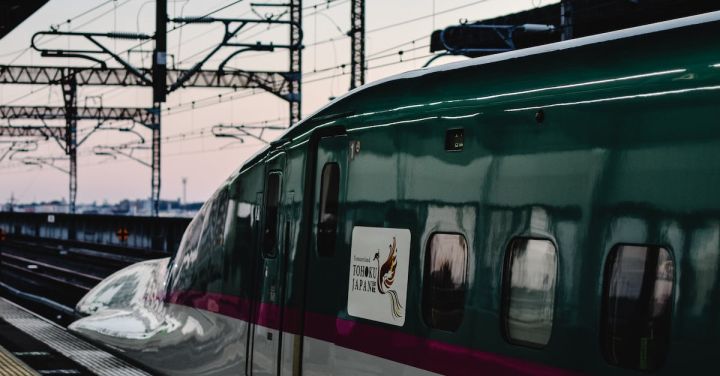The Shinkansen, also known as the bullet train, is a marvel of engineering and a symbol of Japan’s commitment to innovation, speed, and safety. Since its launch in 1964, the Shinkansen has revolutionized train travel, setting new standards for efficiency and reliability. With its sleek design and impressive speed, the bullet train has captured the imagination of people worldwide.
At the heart of the Shinkansen’s success is its unwavering focus on speed and safety. The train’s design and technology have been meticulously crafted to provide passengers with a smooth and secure journey. From the aerodynamic shape of the train to the advanced signaling systems, every detail has been thoughtfully considered.
One of the key features of the Shinkansen is its dedicated tracks. Unlike traditional trains that share tracks with other vehicles, the bullet train has its own exclusive network. This allows the Shinkansen to reach incredible speeds of up to 200 miles per hour, making it one of the fastest trains in the world. The dedicated tracks also ensure that the train can operate with minimal disruptions, further enhancing its efficiency and reliability.
To maintain such high speeds, the Shinkansen employs cutting-edge technology. The train’s wheels are designed to minimize friction, allowing for a smoother and quieter ride. The use of lightweight materials, such as aluminum, reduces energy consumption and enhances overall performance. Additionally, the train’s suspension system absorbs vibrations, ensuring a comfortable experience for passengers.
Safety is paramount on the Shinkansen. A comprehensive set of measures has been put in place to protect passengers and prevent accidents. The tracks are equipped with advanced signaling systems that constantly monitor the train’s position and speed. In the event of an emergency, the train can be quickly stopped using an automatic braking system. The Shinkansen’s robust construction and reinforced structure also make it highly resistant to earthquakes and other natural disasters.
The Shinkansen’s commitment to safety extends beyond technology. The train is operated by highly skilled and trained personnel who undergo rigorous training programs. They are well-prepared to handle any situation that may arise during the journey. Additionally, regular inspections and maintenance checks are conducted to ensure the train’s optimal performance.
The success of the Shinkansen has not gone unnoticed. Many countries around the world have sought to emulate Japan’s high-speed rail system. The bullet train has become a symbol of progress and modernity, representing a nation that values efficiency and innovation.
Beyond its technological advancements, the Shinkansen has had a profound impact on Japanese society. It has connected cities and regions, making travel more accessible and convenient. The bullet train has also contributed to the reduction of traffic congestion and carbon emissions, promoting a greener and more sustainable future.
In conclusion, the Shinkansen is a testament to Japan’s pursuit of speed and safety. Its innovative design, advanced technology, and dedicated tracks have made it one of the fastest and safest trains in the world. The bullet train’s impact extends beyond its impressive speed; it has transformed the way people travel and shaped the future of transportation. As Japan continues to push the boundaries of engineering, the Shinkansen stands as a shining example of what can be achieved through a relentless commitment to excellence.
